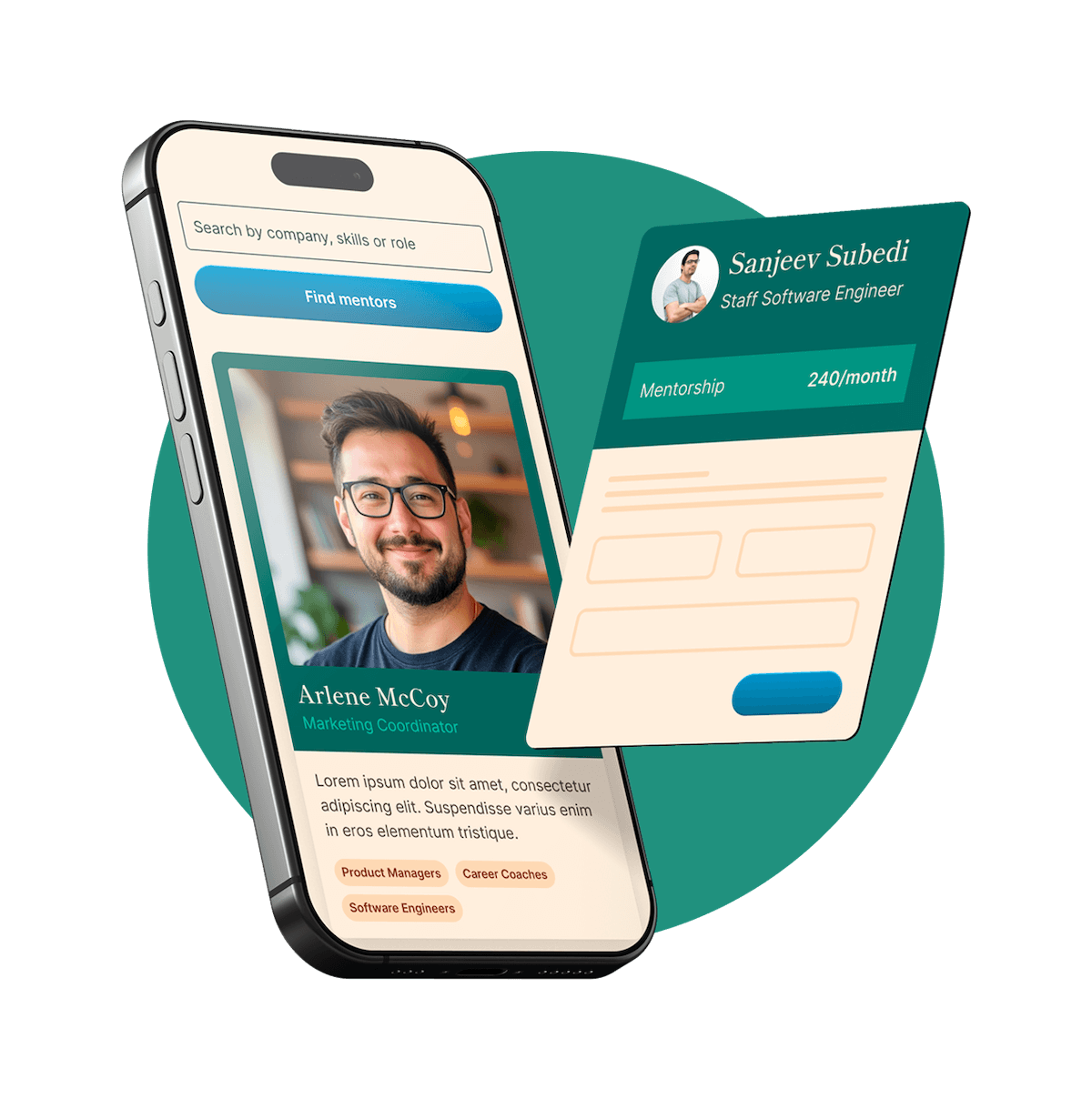"What am I good at?"
A question that haunts teenagers, recent graduates, and probably most of us at some point in our lives. However, when it comes to navigating the vast array of career possibilities, it's one you need an answer to–ASAP.
At its core, this is a deceptively simple question that can trigger existential dread, uncertainty, and sometimes even impostor syndrome.
The challenge isn't just finding an answer—it's finding the right answer: one that aligns your natural talents with meaningful work, creates career fulfillment, and opens doors to opportunities that feel energizing rather than depleting.
If you've ever found yourself lying awake wondering, "what am I good at, really?" or scrolling through job listings feeling disconnected from your own capabilities, this is for you.
In this guide, I'll walk you through a comprehensive process to uncover your genuine strengths and translate them into career directions that feel authentic and promising.

First things first, why is this question so genuinely difficult? There are actually a few reasons.
Often, what others tell you you're good at ("You're such a great listener!") doesn't match your internal experience ("But I find it draining to listen to problems all day"). This disconnect creates confusion about your true strengths.
Many of us are competent at numerous things but truly excellent at far fewer. Distinguishing between "I can do this adequately" and "I have unusual ability here" isn't always apparent from the inside.
Skills are learned capabilities. Strengths combine natural talent with developed skills and genuine passion. You can be skilled at something without it being a true strength that energizes you.
What you're good at can evolve and shift based on environment, team dynamics, resources, and life stage. Your strengths might manifest differently across contexts, making them harder to identify consistently.
We all have areas where we lack self-awareness about our capabilities—both in overestimating and underestimating them. These blind spots cloud our ability to answer "What am I good at?" accurately.
It's important to understand these problems because you'll then understand how to navigate and ultimately overcome them. The short story is that you can't always see yourself for who you are right now, but are aware (although this can be changed mentally) of your past experiences.
You may hold beliefs and ideas about yourself that just aren't true or missing them entirely. That's why it takes a proactive approach to find the real answer.

Let's look at this from multiple angles. Answering the question "What am I good at?" will take a few methods, some practical self-observation, and external feedback to create a complete picture of your strengths.
Start by taking a look at performance in your educational or professional life. How you've performed and what you've done is bound to contain valuable clues about your natural strengths.
This reflection process helps you identify consistent patterns across your experiences.
Create a detailed list of 6-8 experiences where you performed at your absolute best. Include experiences from:
For each experience, document:
Example:
"Flow" occurs when you're so absorbed in an activity that you lose track of time. These moments often indicate alignment with your natural strengths.
Track your activities for two weeks, noting when you enter a flow state. Pay attention to:
Action step: Create a "Flow Journal" for two weeks, recording instances when you lose track of time in your work. Note the specific activities, duration, and conditions.
Areas where you learn quickly often indicate natural aptitude. Reflect on:
Action step: Ask 3-5 people who've known you in different contexts: "What have you seen me learn or master unusually quickly?"

While self-reflection is valuable, scientifically-developed assessments can provide structured insights about your strengths.
Several research-backed assessments can help answer "What am I good at?" from different angles:
Beyond personality and strengths, specific skill assessments can help you understand your technical and functional capabilities:
If you're looking for a professional, personalized approach, it can be worth reaching out to a mentor who can guide you through the process of finding your strengths (and a whole lot more).
Alternatively, you could use an AI chatbot to ask you questions, almost like your own questionnaire or test, to create creative answers.
Action step: Select and complete at least one standardized strength assessment and one skills assessment that seems most relevant to your interests.
While there's certainly work for you to do yourself, how others perceive your strengths also provides a crucial perspective that complements your self-assessment.
Identify 5-8 people who have worked with you in different contexts (managers, colleagues, direct reports, clients, etc.). Ask them these specific questions:
Record these conversations (with permission) or take detailed notes, looking for patterns across responses.
Example pattern discovery: Multiple people mention your ability to:
These recurring themes often point to core strengths you might not fully appreciate.
Your online presence can contain unexpected clues about what you're good at:
Action step: Review your digital communications from the last 3-6 months and note recurring themes about what others implicitly or explicitly recognize you for.
Reading about your strengths isn't enough—testing them in real contexts provides concrete evidence about what you're truly good at.
Create a matrix of small, low-risk projects that test different potential strengths:
Example matrix:
If you're early in your career or exploring new directions, systematically sample different skill areas:
Skills that score high across these dimensions may indicate untapped strengths.
Action step: Choose two potential strengths you're uncertain about and design small projects to test them in real-world conditions within the next month.
Now you've gathered data from multiple sources, it's time to synthesize this information to answer "What am I good at?" with confidence.
Create a visual map that identifies where different data sources converge:
For each converging strength, note:
This convergence analysis helps distinguish your true standout strengths from mere competencies or situational abilities.
Organize your verified strengths into these categories:
This categorization helps you see patterns in your strengths across different contexts and applications.
Action step: Create a visual strength map that shows where different evidence sources converge, and categorize your top 5-7 strengths using the framework above.

At the end of that process, you should have a much clearer idea of what you're good at and, thus, where you spend your efforts when seeking a career that works for you and suits who you are.
However, there's a framework for translating the insights that ensure you make positive, meaningful career decisions.
Create a matrix that maps your confirmed strengths against potential career paths:
This analysis helps you identify roles that would naturally utilize your unique strength pattern.
For each key strength, create a development plan:
This approach ensures you're not just identifying strengths but actively developing them toward mastery.
Action step: Complete both the Strength-Career Alignment Matrix and the Strength Development Roadmap for your top 3-5 strengths.
Sometimes, your strengths may seem to conflict or pull you in different directions. For instance:
When facing such apparent conflicts, consider:
Example resolution: "My strengths in both detailed analysis and big-picture thinking seem to pull me in different directions. However, I can bridge these in a research director role where I occasionally do deep analysis while primarily guiding the overall research strategy."
As you work through this process, you may encounter these common roadblocks:
When you're competent at many things, it's easy to mistake basic proficiency for true strength. Remember that strengths have these characteristics:
Breakthrough strategy: For skills where you're unsure if they're true strengths, rate them not just on competence but on energy—do you feel more alive and engaged when using this skill?
Your strengths may evolve over time, leading to confusion about what you're "really" good at. This is normal! Your strengths aren't fixed but develop based on:
Breakthrough strategy: Instead of seeking a permanent answer to "what am I good at?", recognize that strength identification is an ongoing process to revisit every few years.
A classic. Many high-achievers struggle with accepting their strengths due to impostor syndrome, leading to:
Breakthrough strategy: Create a "validation evidence" document where you record specific, concrete examples that demonstrate your strengths, making it harder to dismiss them.
Perfectionism can prevent you from recognizing strengths if you:
Breakthrough strategy: Adopt a growth mindset by recognizing that strengths develop over time—you can be good at something and still have room to improve.

A lot of what we've spoken about here is theory, or you taking the time to understand yourself, building your confidence, and giving you a foundation to work with.
In reality, there's more work to be done - namely, leveraging these strengths effectively in your career:
Use your strength insights to stand out in hiring processes:
Example positioning statement: "I combine analytical rigor with strong interpersonal skills, allowing me to translate complex data into actionable insights that stakeholders actually understand and implement."
Even within your current position, you can often reshape your role to better leverage your strengths:
Example approach: "I noticed our team needs better systems for tracking project milestones. Since creating organizational systems is a strength of mine, I'd like to develop a new tracking dashboard if you'll support me in spending time on this initiative."
In today's economy, you can increasingly design a portfolio career that combines multiple ways to apply your strengths:
This portfolio approach allows for a more complete expression of your capabilities than any single role might provide.
The question "What am I good at?" is ultimately just the starting point for a more important inquiry: "How can my unique strengths create value for others while creating fulfillment for me?"
The most fulfilling careers come not just from using your strengths but from applying them to work that matters to you—creating a powerful alignment between what you're good at, what the world needs, and what engages your passion.
Need personalized guidance in discovering your strengths?
Mentorcruise connects you with experienced professionals who can provide tailored guidance as you discover and develop your professional strengths. A mentor can:
Don't navigate your strength discovery journey alone.
Find a mentor to help you unlock your full potential and translate your natural abilities into career fulfillment.
Find out if MentorCruise is a good fit for you – fast, free, and no pressure.
Tell us about your goals
See how mentorship compares to other options
Preview your first month
